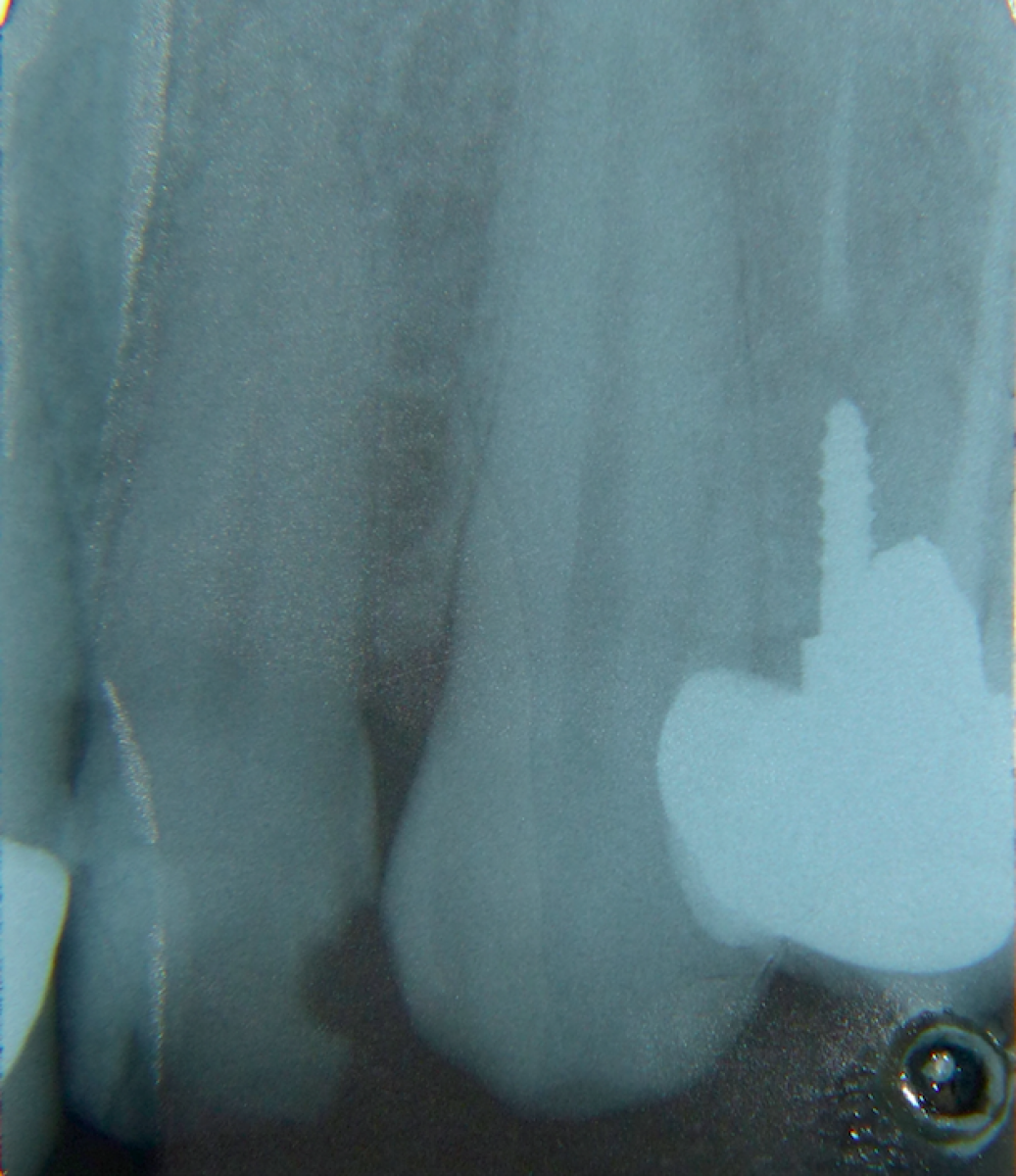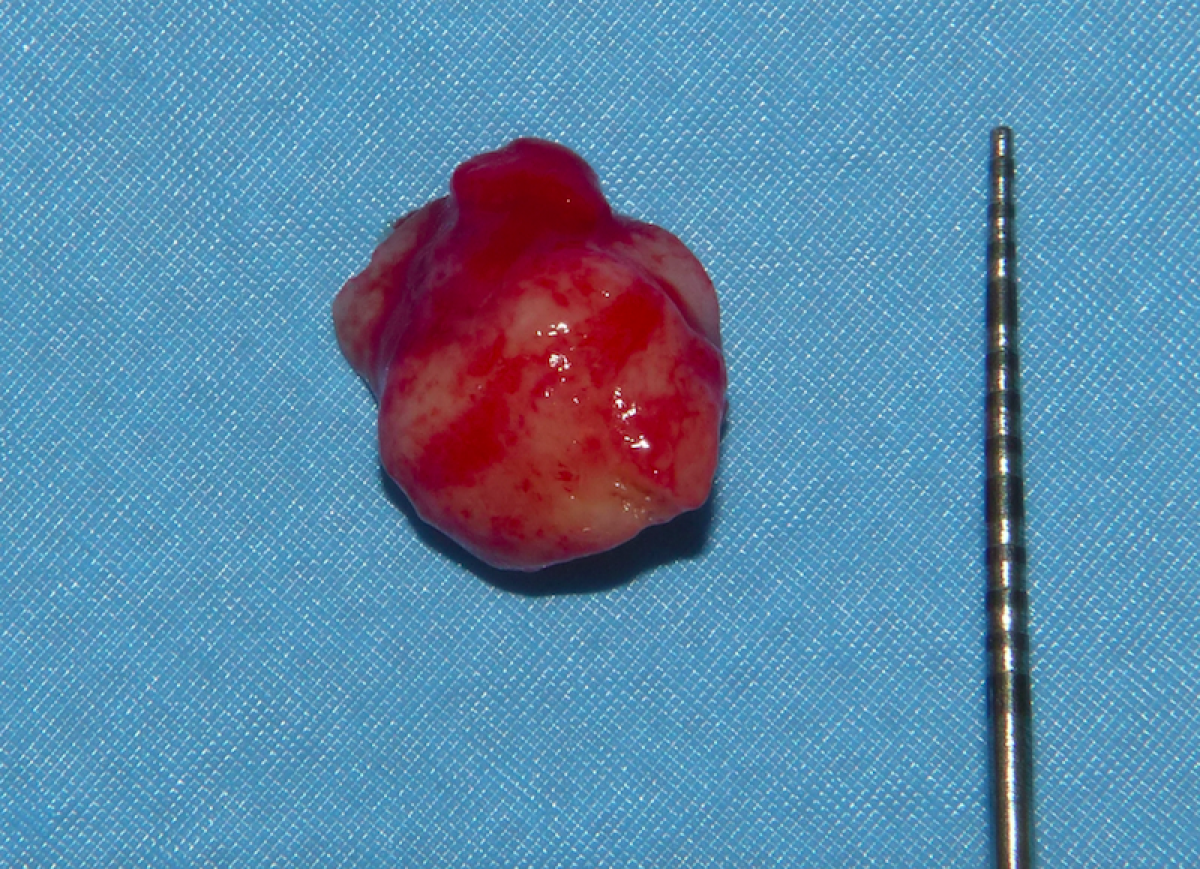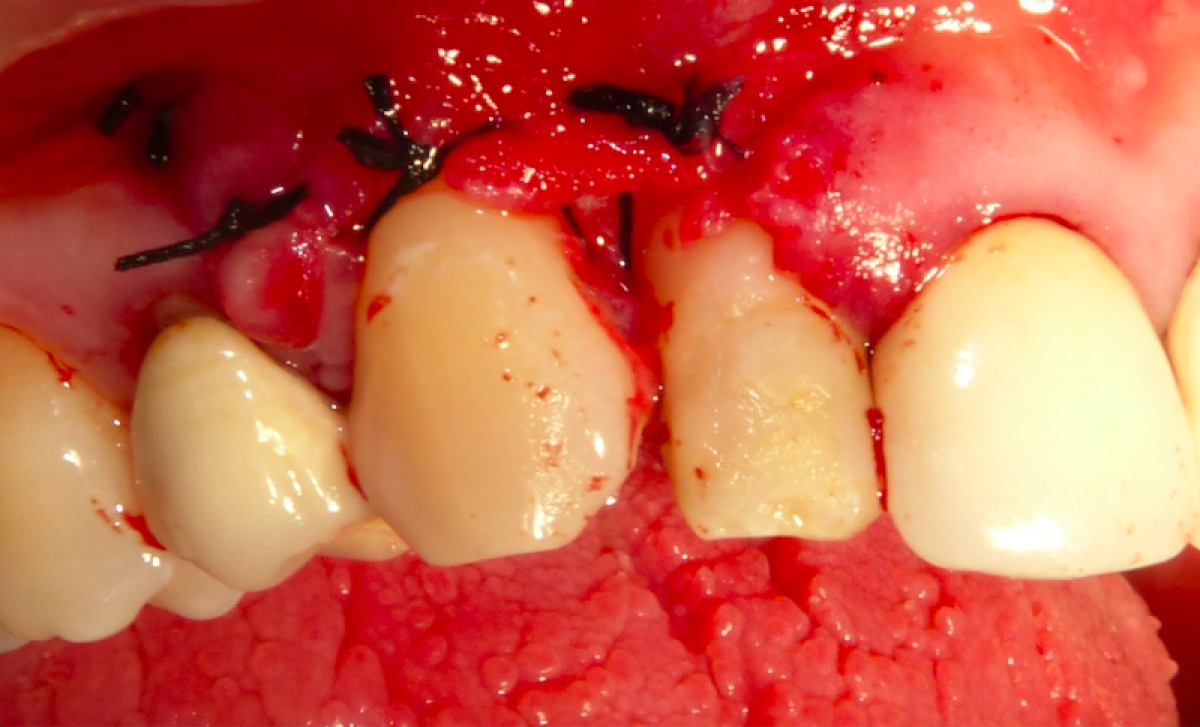
Gingival swelling adjacent to the dental elements roots: a clinical case
Marco Berardini
A male patient of 43 years comes to our observation, complaining about the presence of a roundish gingival excretion in the anterior area of the upper jaw. The patient reports that he has already noticed the lesion for a long time (a few years) and that he has not visited a specialist examination due to negligence and a subsequent depressive symptomatology. He also reports that he has noticed a slow but progressive increase in the size of the lesion in question.
On intra-oral examination, the lesion appears as a swelling of diminutive consistency, of a pinkish color uniform, well bounded by surrounding healthy tissues and associated with elements 1.2 and 1.3 (figure 1). The size is about 1 cm and there are no signs of ulceration or purulent exudation. The intra-oral radiographic examination (fig. 2) also allows to exclude any involvement of the underlying hard tissues and, together with the clinical features, allows us to presume the absolute benignity of the lesion.
Obtained informed consent of the patient to treatment and given the clinical characteristics of presumed benignity (net margins, no bone involvement, soft consistency, uniform color, absence of ulceration and / or necrosis, clear delimitation with circus tissues - standing), we proceed with the total excision of the lesion with perilesional margins of 1 mm. The roots of the associated dental elements (1.2 and 1.3) are carefully cleaned and smoothed in order to remove the parodontal ligament cells which are likely to be at the origin of the lesion. The biopsy sample is immediately immersed in 4% formalin and sent to the laboratory for histological analysis (fig. 3). The periosteum around the area subject to removal is subdued with the blade of the scalpel in order to be able to pull the flap and avoid leaving the exposed bone tissue (fig. 4). The pathologist detects the presence of multinucleated giant cells distributed in an edematous and mucucinose stroma containing blood vessels and fibroblasts.
Based on the histological examination, a gigantocellular epulis is diagnosed. The etiology includes an irritative-inflammatory noxa that stimulates the abnormal proliferation (benign) of the cells of the periodontal bond. For complete recovery, treatment includes simple excision and removal of all local irritants.
For additional information:
Dental Cadmos n° 2/17 - https://doi.org/10.19256/d.cadmos.02.2017.04
 Related articles
Related articles
Oral pathology 10 November 2025
Evolution of dental informatics as a major research tool in oral pathology
Bioinformatics is a relatively new field of science that incorporates the principles of biology and computer science.
Oral pathology 04 September 2025
The classic dental diseases, caries and periodontal disease, are commonly thought to have little effect on systemic health.
Oral pathology 23 June 2025
rtificial intelligence (AI) has rapidly advanced in healthcare and dental education, significantly impacting diagnostic processes, treatment planning, and academic training.
Oral pathology 07 May 2025
Antibacterial Effect of Juglans Regia Bark against Oral Pathologic Bacteria
In this study antimicrobial effect of ethanolic and aqueous extracts of Juglans regia bark in Iran was evaluated on four different oral bacteria, Streptococcus mutans, Streptococcus salivarius,...
 Read more
Read more
Periodontology 14 November 2025
This study was carried out to assess the oral hygiene awareness and practices amongst patients visiting the Department of Periodontology at Gian Sagar Dental College and Hospital, Ramnagar (Patiala).
Editorials 14 November 2025
Penn Dental Medicine shared its expertise in caring for persons with disabilities with dental care providers from throughout Jamaica at a 1 ½ -day hands-on continuing education program, held October...
News 14 November 2025
Dr. Thomas M. Paumier, a dentist in Canton, Ohio, is the new President-Elect of the American Dental Association (ADA). Dr. Paumier was elected at the ADA House of Delegates meeting in Washington,...
News 14 November 2025
Premier Dental Implants & Prosthodontics is proud to announce the opening of its newly renovated dental office and the launch of its new website
News 14 November 2025
Henry Schein One and AWS Collaborate to Transform Global Dentistry with Generative AI
Industry leaders join forces to bring advanced AI capabilities to dental technology platforms — redefining patient care, clinical efficiency, and practice performance worldwide

















